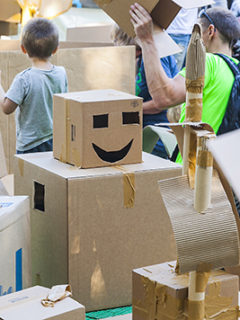Here at RAJA, we know a lot about packaging. Have you ever wondered about the best way to pack something fragile with an odd shape, like a crystal chandelier? Follow our step-by-step guides to learn how to pack some of the more difficult items that businesses or individuals may need to protect during transport.
Below, we’ll walk you through the best ways to pack the following items: crystal chandelier, fine china, paintings, wine bottles and a bicycle.
This article was last updated on 6 April 2022.
Learn how to package a crystal chandelier
Crystal chandeliers are extremely delicate and have fragile parts, are you unsure where to start or how to protect them? Follow our steps to success!
What you need:
- A cardboard box
- Packing tape
- Foam or bubble wrap
- Filling material such as packing chips
- Ribbon
- Warning labels – handle fragile goods carefully/side up
If possible, use an industrial hook as it is easier to pack the chandelier if it is hanging. If this is not possible, be sure to place the chandelier on a soft surface as it can be damaged if placed on a hard surface. Padding with pillows, towels and blankets works well. You can also use our wellrobe to hang the chandelier.
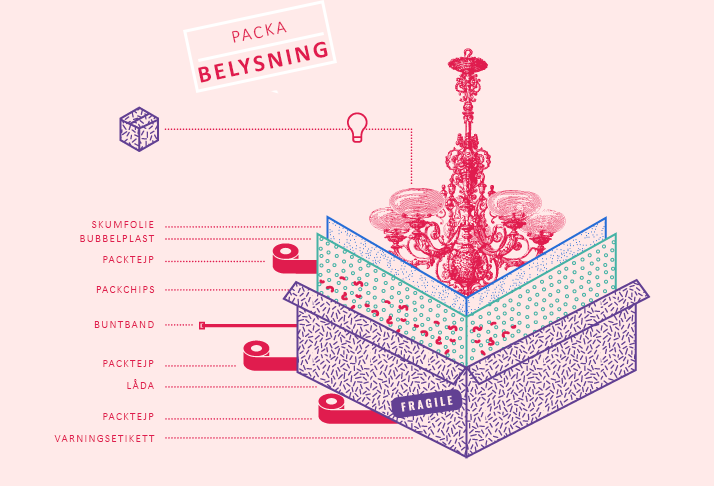
How to:
- To pack the chandelier, first find a suitable box. The box should be about 75 mm larger than the chandelier. Consider the weight of the chandelier, for heavier chandeliers two-ply corrugated boxes provide better protection.
- Remove any bulbs from the chandelier and pack in a separate box. Look for other removable pieces, if any other pieces can be removed, wrap these individually and pack them in a separate box.
- If the chandelier has sharp edges that can be damaged during transport, wrap these with bubble wrap or use cardboard and tape to protect them. Pay attention to the top and bottom of the chandelier as they are both most easily damaged during shipping. Wrap these areas carefully with foam or bubble wrap.
- Make sure the bottom of the cardboard is well taped. Fill the bottom of the box with foam or bubble wrap. Wrap loose parts and secure with bundling tape. Carefully lower the chandelier into the box, keeping it as upright as possible. Fill the rest of the box with loose filling, making sure it is compressed so the chandelier cannot move.
- When you are happy with the result and it is tight and secure in the box, cover the top with foam or bubble wrap. Close the box and seal with packing tape. Be sure to label boxes containing the chandelier parts with a “handle delicately” warning label and mark the side that should be up with a “this side up” label.
Best way to pack fine china
Packing small fragile items such as fine china can be tricky, take a look at how we at RAJA pack china to make sure it lasts throughout transportation!
The häröyou:
- Wastepaper
- Bubble wrap
- Packejp
- Filling materials such as packing chips
- Foam packing boards
- One box
- A second carton of two-wall – needs to be 75 mm larger than the first
- Warning labels – e.g. “glass”, “handle fragile goods with care”, “watch out”, “this side up”.
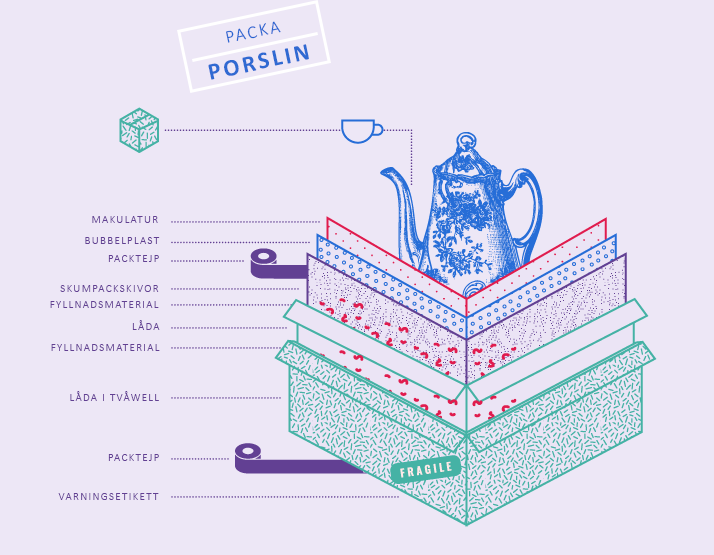
Here’s what you do:
- First make sure you have enough space to work on. Clear a large packing table or workstation; if you don’t have enough space, put blankets on the floor to create a large enough area to see all the materials and items to be packed. Blankets also help to protect the crockery from accidental knocks.
- You’ll need a cardboard box that’s at least 25 mm larger than the china you’re packing down. You’ll need another two-ply corrugated box that’s at least 75 mm larger than the first box.
- Lay out the porcelain you are going to pack and sort the items into equal groups. If your items are not of similar shapes or are extremely fragile, we recommend packing in separate smaller boxes to provide better protection. These smaller boxes can then be packed inside the other box.
- Wrap each item individually with shredding paper and secure with tape if necessary, continuing to wrap in bubble wrap and tape. With very delicate items that are prone to breaking easily, it is always best to be on the safe side. Many damages to such objects occur because they bump into each other during transport.
- Take the smaller box and cut two foam packing slices to fit the bottom. Place one of the discs in the bottom of the box and put the first layer of packed china on top, then cover with about two inches of filler. Repeat until the box is 25-50 mm from being filled. Add the second foam packing sheet and press gently when closing the box, being careful not to press too hard as this may damage the contents.
- Place about 75 mm of filling material on the bottom of the larger box and place the packed smaller box on top. Use filler to cover the entire space around the smaller box. When finished, close the larger box and ensure that all flaps and edges are securely closed with tape. A warning label can then be attached to the box to ensure extra safe transport.
Packing art: tips from Eyestorm
Works of art are often valuable, so extra precautions are often required when sending paintings and other art. We spoke to Eyestorm, a leading online gallery and retailer of limited edition contemporary art, to get their tips.
How do you at Eyestorm pack a painting?
We pack the art flat in wells and then into a custom white box with Eyestorm’s logo. The boxes come in standard sizes, either 750 x 750 x 30mm or 1200 x 1200 x 30mm.
Can you tell us how your packing process works?
We take the artwork and wrap it in shredded paper. Corner protectors are added to the edges of the board which are then covered with enwell secured with tape. The wrapped painting is then placed in the white box which is secured with tape.
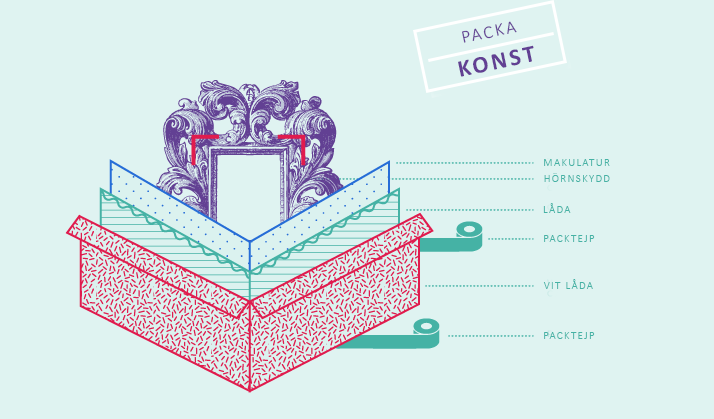
Packing wine bottles: tips from Vin Gourmet
Transporting wine? Not sure how to prevent damage or broken bottles? We spoke to Vin Gourmet, which imports characteristic and quality wines in small quantities and sells to liquor stores and restaurants, to get their advice.
How do you pack your wines for transport?
At Vin Gourmet, we manage the packaging of wines by starting with the assembly of the boxes, which we believe is a very simple process. Most commonly we send fully filled boxes and we use boxes containing 6 or 12 compartments, the process is very simple, we put the wines in the boxes and tape the cartons together with packing tape. Occasionally we send single bottles of wine and then we need to fill the boxes with bubble wrap to keep the wine bottles tight during transport, all to minimise the risk of crushing.
How easy was it to find protective packaging that perfectly met all your shipping needs?
We are very happy with the crates we use today as they do not give us any complaints from our retailers.
What type of protective packaging do you use the most?
We use wine boxes for postal shipments that are suitable for six or twelve bottles of wine. They are extra strong and each bottle is protected by four layers of corrugated cardboard. They fit all our bottles and are very suitable for our DHL deliveries.
Do wine bottles get crushed in transit?
At the moment we have no complaints about our wine bottles. We receive information from Systembolaget about the arrival of our deliveries and so far we have not had a single problem with broken or shattered bottles.
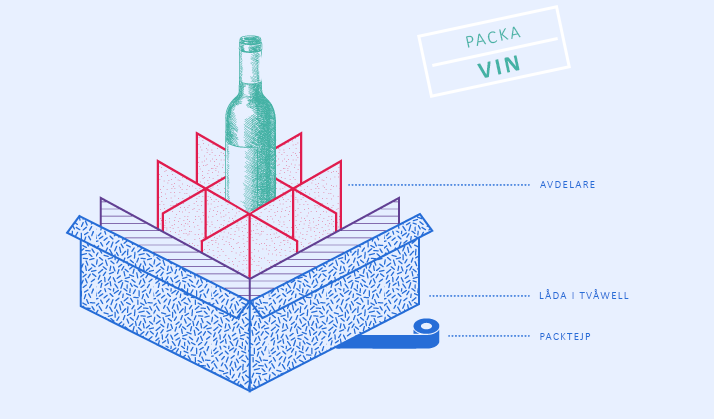
How do you pack a bicycle?
If you wish to transport a bicycle, it is important to take precautions so that it is not damaged in transit. Here are some of our tips:
This is what you need:
- Bubble wrap
- Edge protectors
- Filling material such as packing chips
- A cardboard box, big enough for the whole bike frame
- A small box or zip bag for nuts and bolts
- Ribbon
- Tools for disassembly
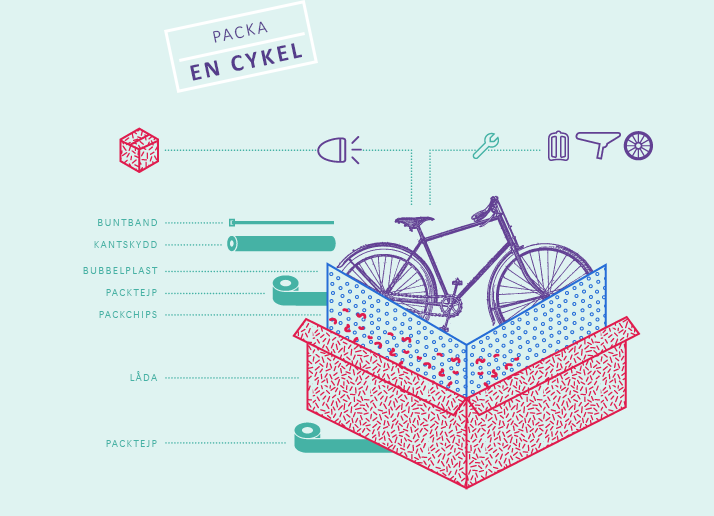
Here’s what you do:
- Make sure you have a large space to work in. Remove any extra accessories, such as lights, mirrors and bottle holders, and wrap them separately.
- Remove the bike seat. If your seat is attached with bolts, put the bolts in a separate bag so they don’t come off. Then use a wrench to remove the pedals.
- If you can, turn the handlebars 90 degrees so that they are flush with the bike frame. If this is not possible, you will need to remove the handlebars as well. Unscrew all the bolts holding the handlebars in place, but do not loosen any cables. Lower the handlebar vertically so that it is in line with the front wheel.
- Then remove the front wheel. If you have quick-release bolts, this is very easy. If not, unscrew some bolts and put them in the plastic bag with the others. Let some air out of both tyres before packing them.
- To protect your bike during transport, you must first use bundling tape to secure the handlebars to the main bike frame. Use bubble wrap or edge protectors placed around the bike frame to prevent scratches, secure with bundle tape. Wrap as much of the frame as possible in foam for best protection. If it is not possible to use edge protectors, use bubble wrap instead and secure with tape. Cover all cogs with bubble wrap or foam to avoid sharp edges that can scratch the rest of the bike.
- Fill the bottom of the box with about 5 cm of filler and place the bike frame on top. Place the front wheel in the box next to the frame. Fill the small box with nuts and bolts, along with any accessories removed from the bike.
- Now fill the rest of the box thoroughly with filler material. The aim is to use enough so that the frame doesn’t move too much. When this is done, close the box and tape it shut with packing tape.
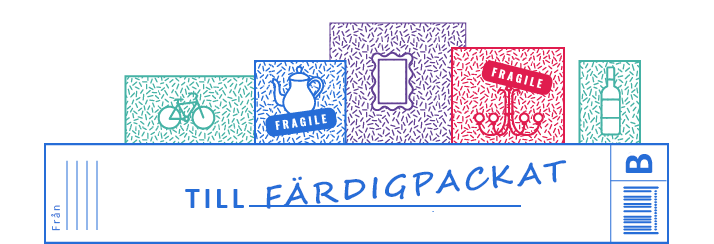
Need help with packaging?
RAJA are specialists in packaging and wrapping. On our website you will find everything you need in packaging, from boxes and cartons to fillers and protectors, and more. Of course, you can also order our latest product catalogue for free.
Stay in touch with us
- Contact our packaging specialists for free advice
- Subscribe to our newsletter for the latest packaging news and access to exclusive promotions
- Follow RAJA Sweden on Linkedin, Instagram and Facebook














